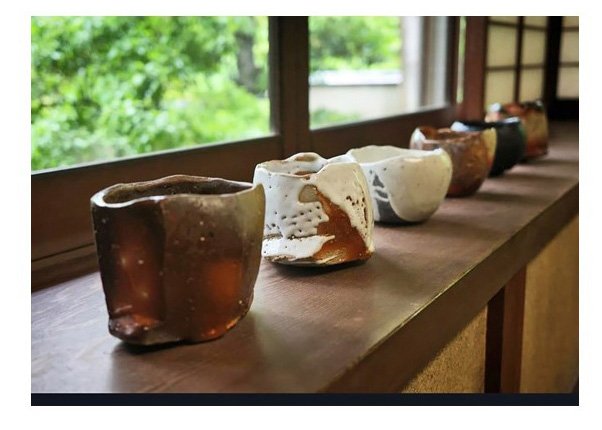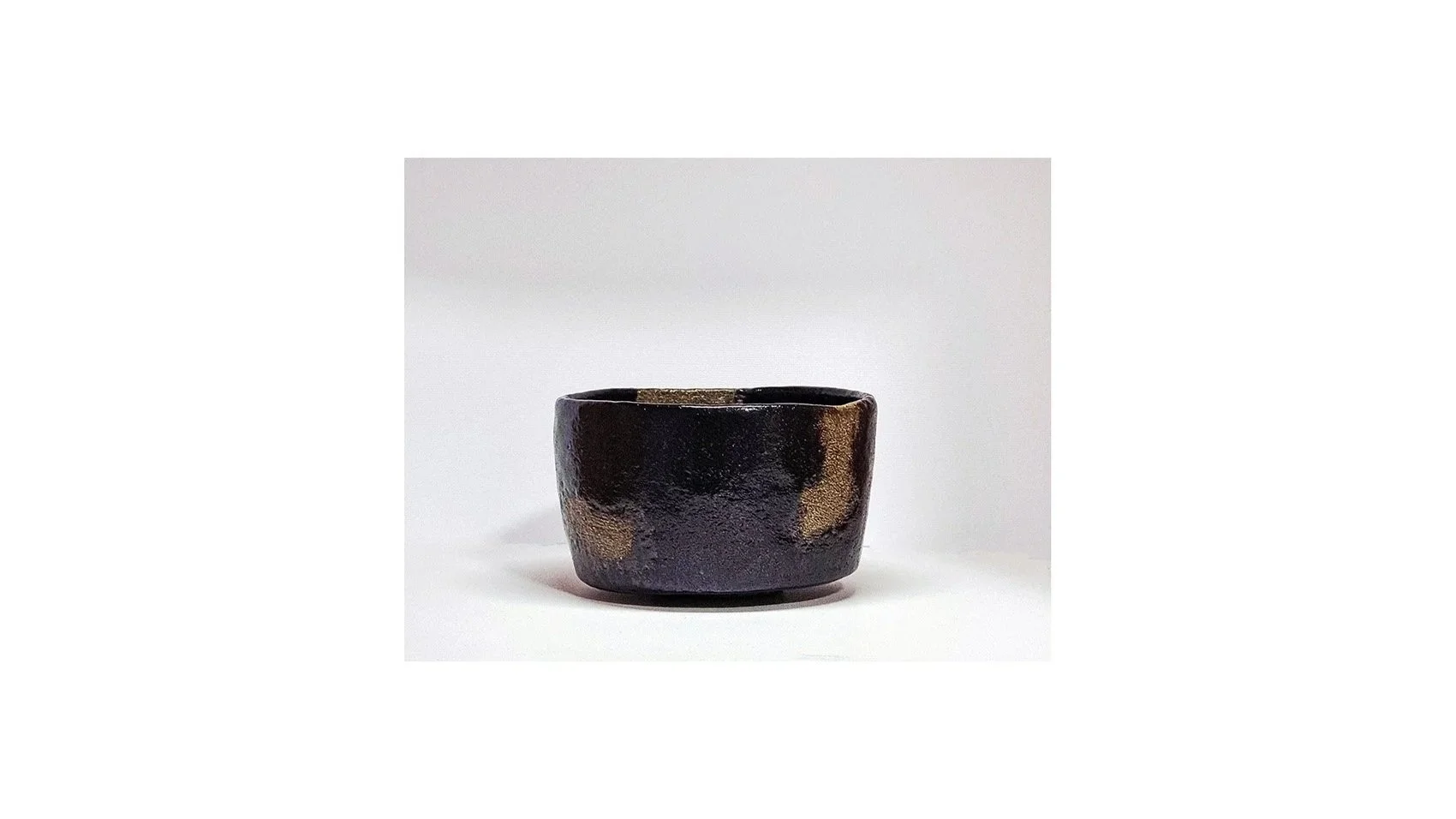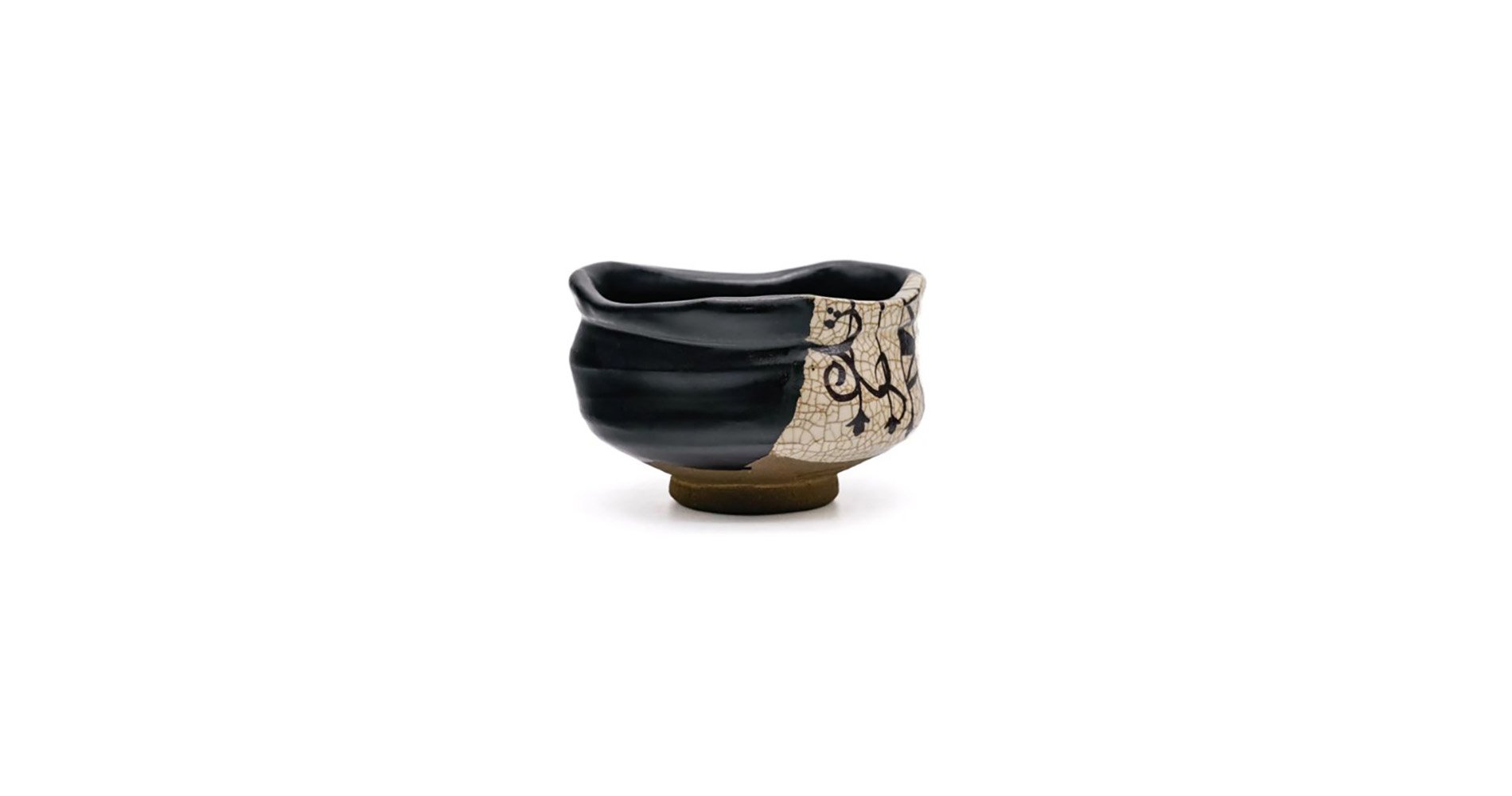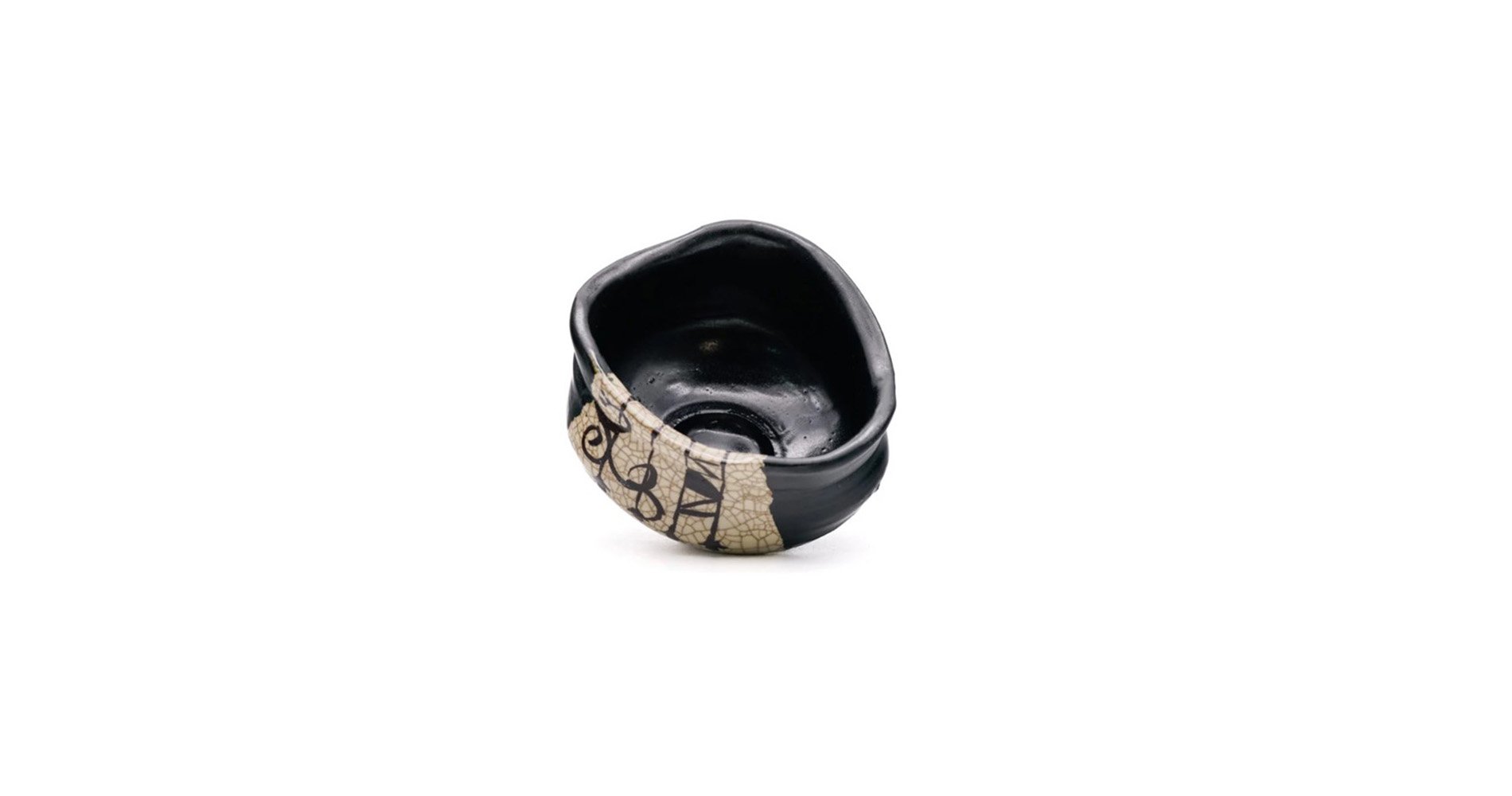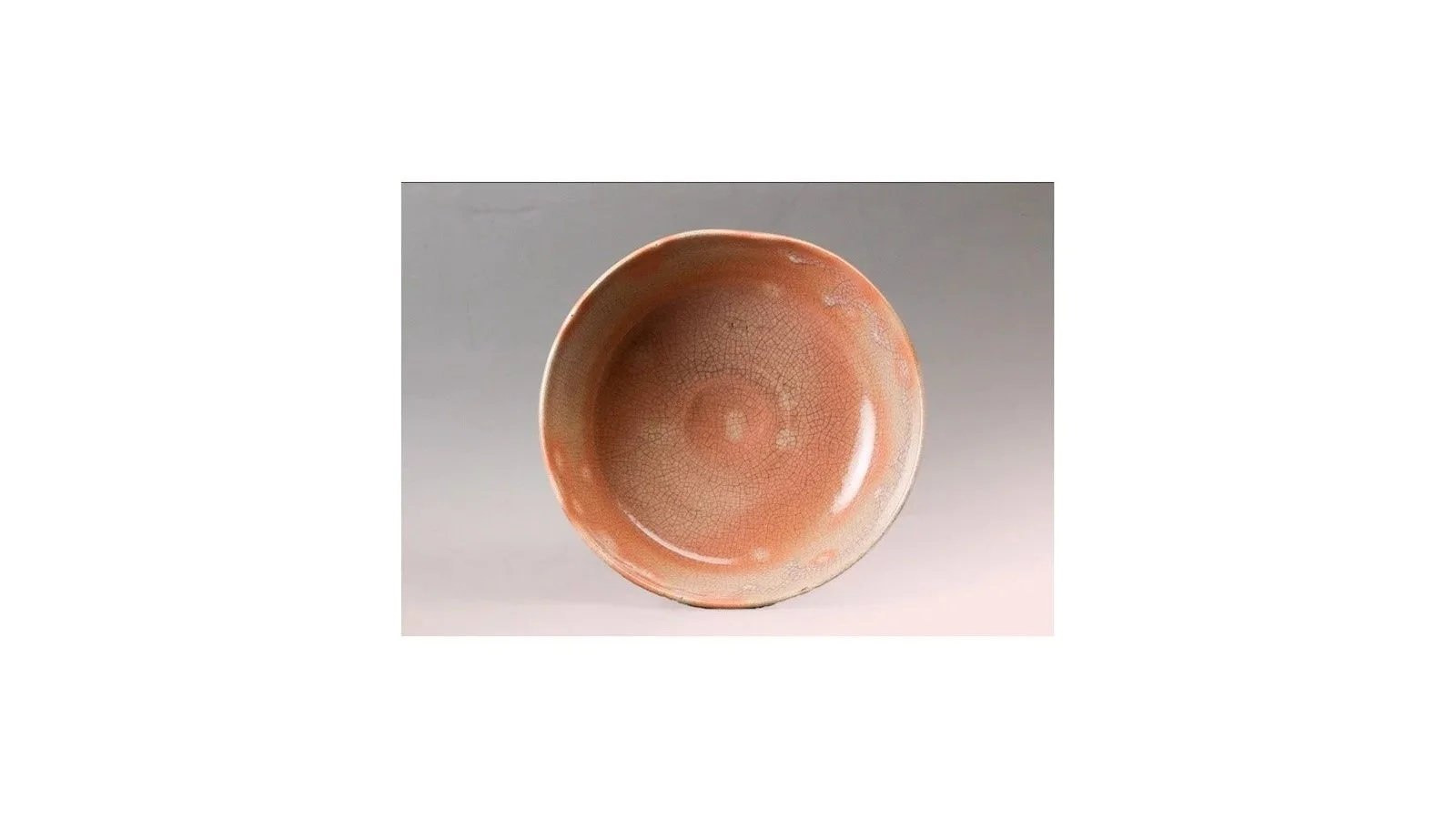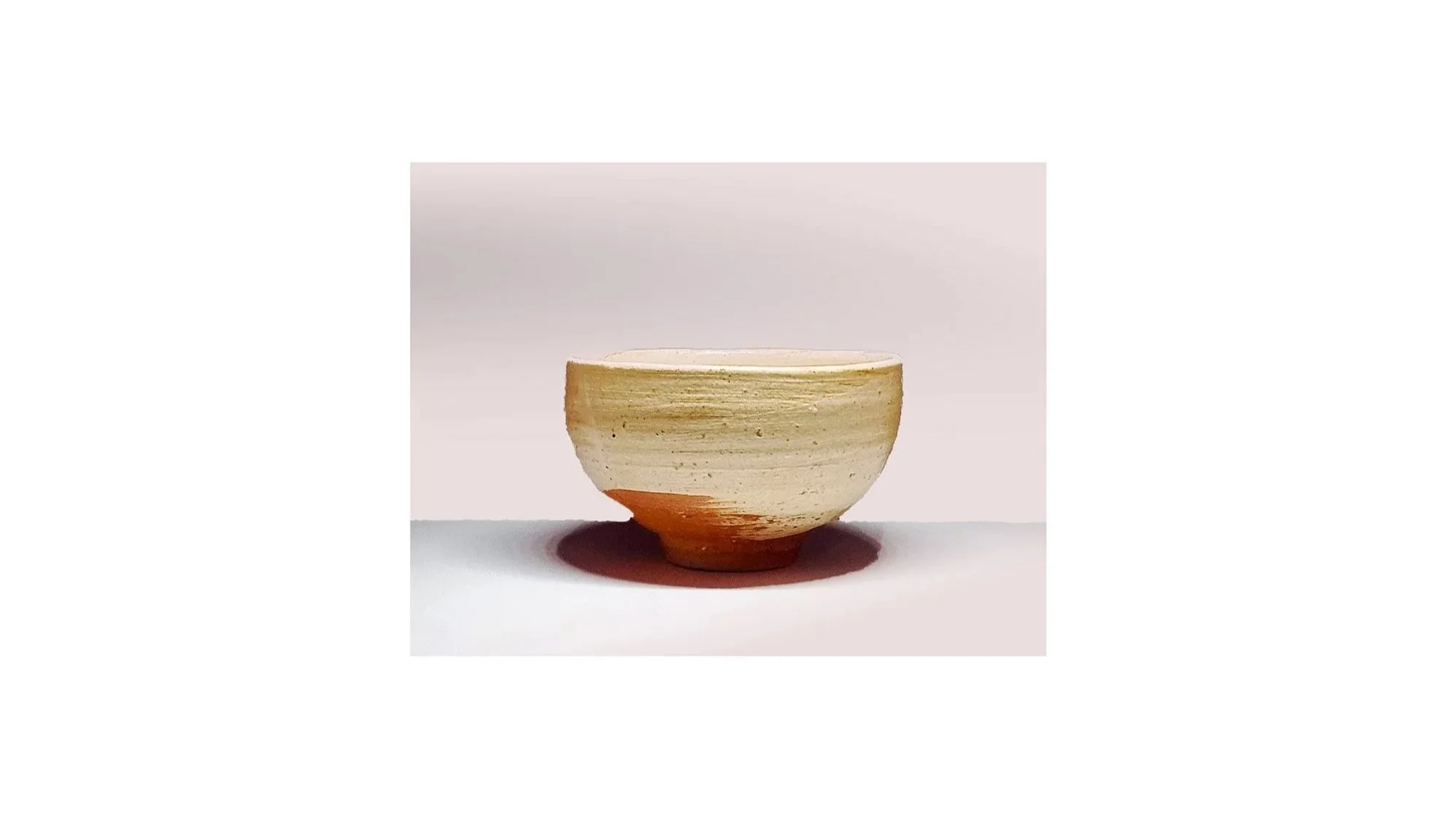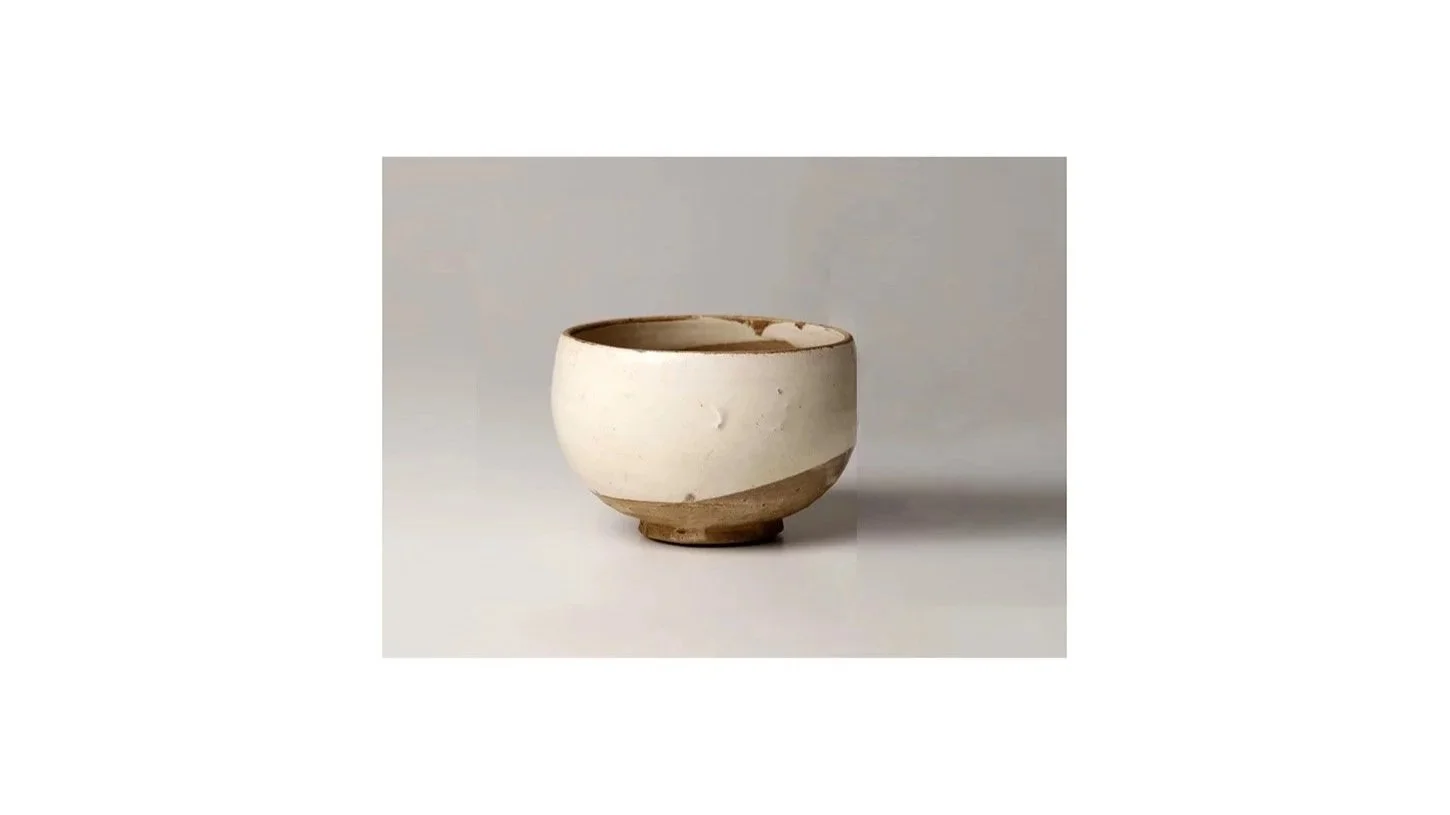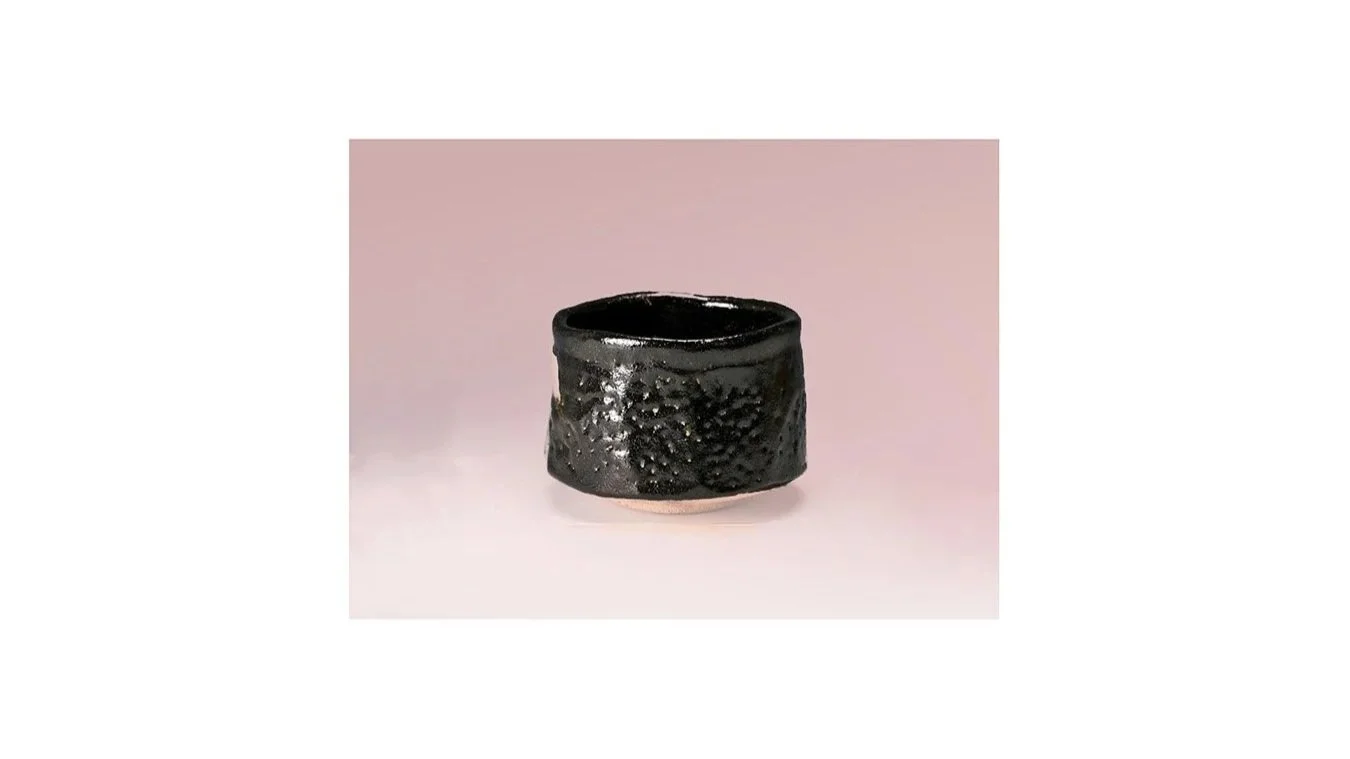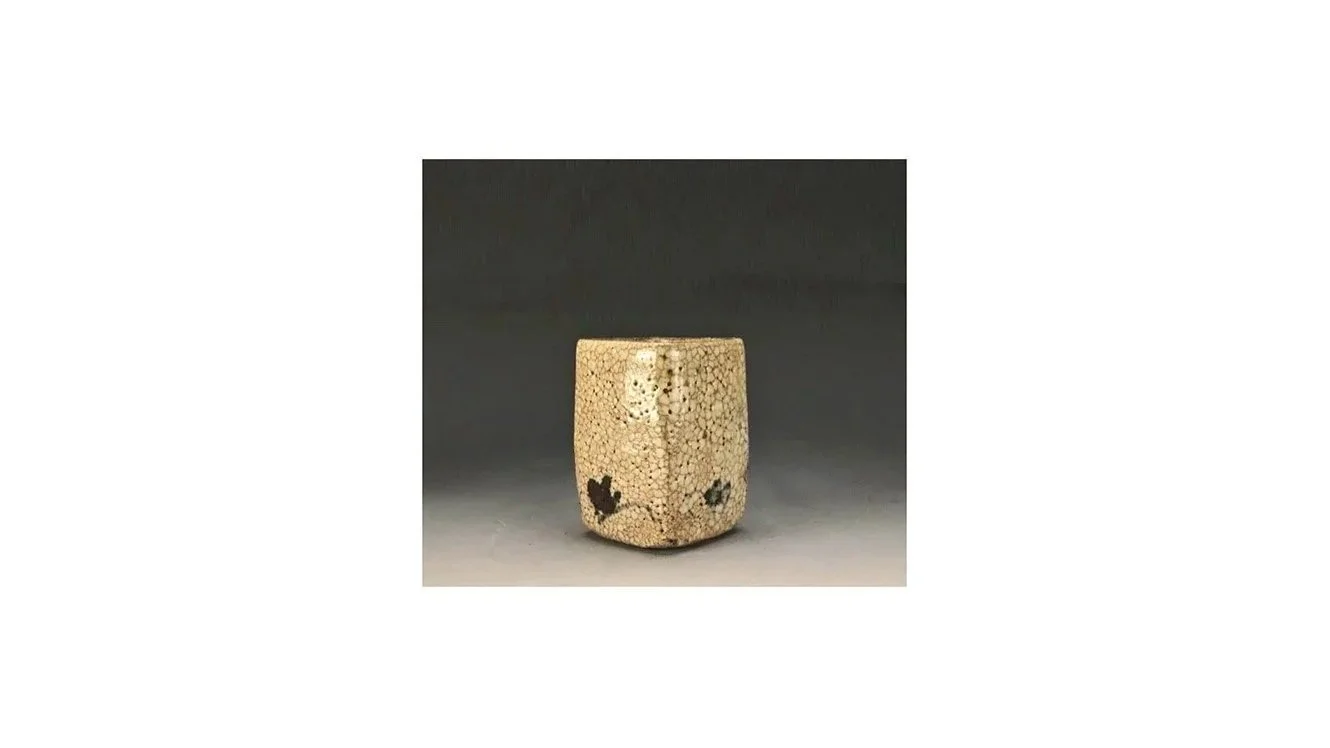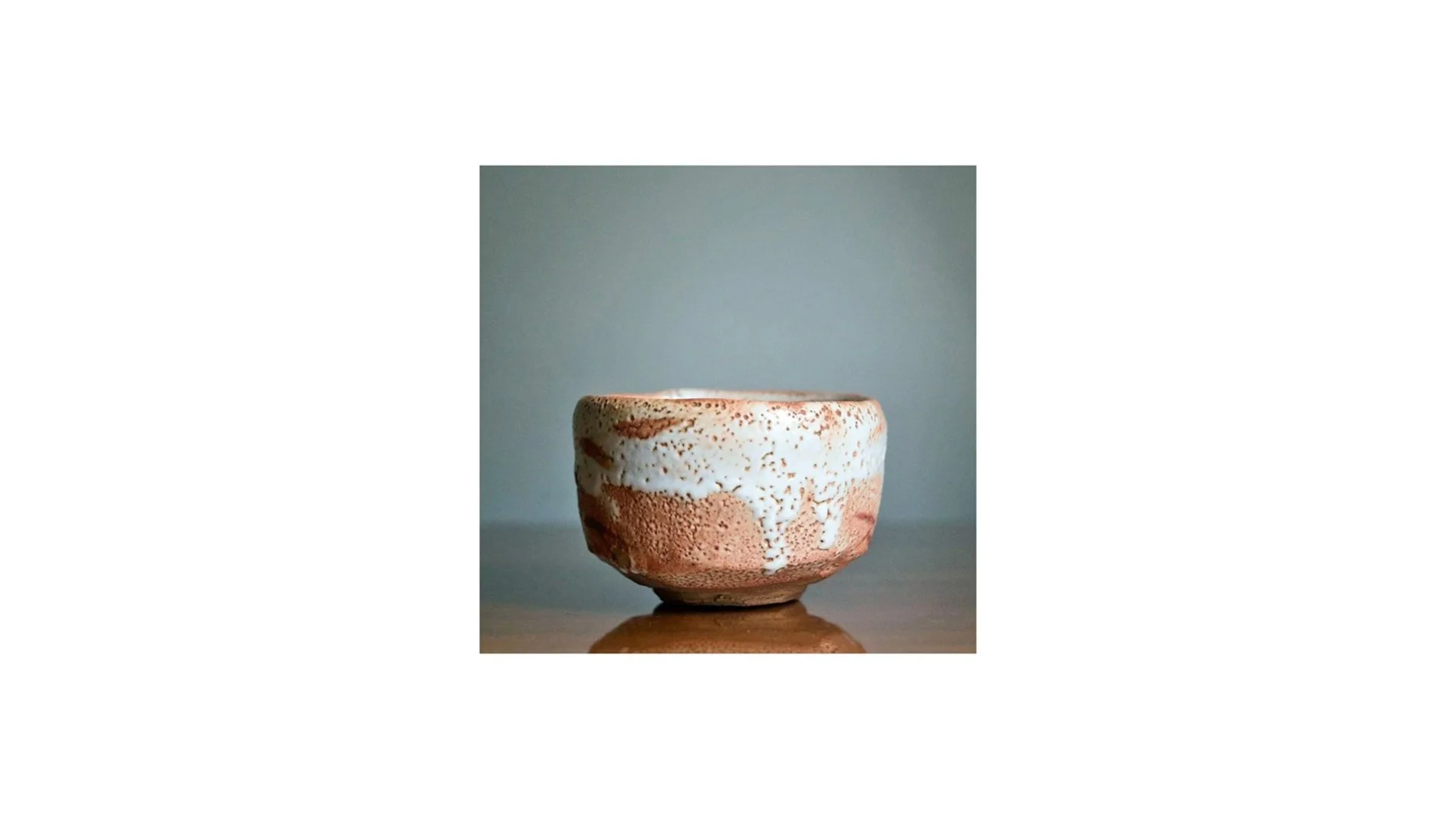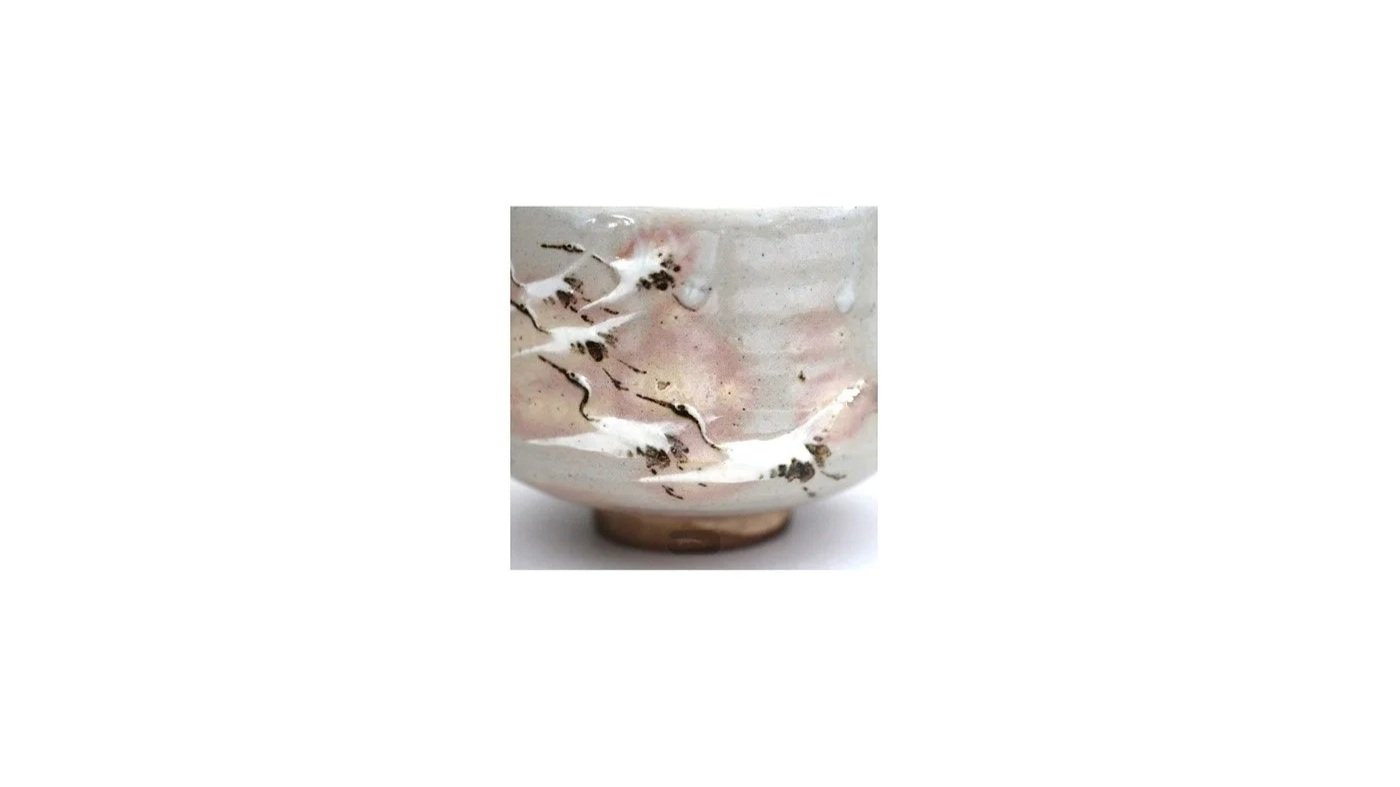TEA BOWLS
Japan famously invented the tea ceremony and chado (the Way of Tea), a meditative ritual rooted in Zen philosophy and with it, elevated the humble tea bowl or chawan into an iconic ceramic form. In this gallery, you will encounter traditional and traditional-style modern tea bowls, some dating to the the early years of the tea ceremony in the late 16th to 17th centuries while others are recent makes. All are imbued with qualities that reflect the Japanese aesthetic concept called wabi-sabi, roughly translated as finding beauty in the modest, the imperfect and the impermanent. Since the time of tea master Sen no Rikyu (1522-1591), wabi-sabi has permeated beyond the tea ceremony to many other aspects of Japanese art and culture, including painting, calligraphy, bamboo and lacquer ware. That it has endured when many other art styles have come and gone is a testimony to its profound message, always striking a chord in the spirit of man, affirming our insignificance in a world of constant flux. The tea bowls showcased in this gallery are sublime expressions of this enduring philosophy.
A 17th century black tea bowl by the 4th head of the famous Raku family in Kyoto, Raku Ichinyu who inherited the title of Raku master, Kichizaemon IV, at the age of 16 after the death of his father, Donyu at 58. Ichinyu’s works varied over time, moving stylistically closer to that of Raku founder, Tanaka Chojiro in his later years. This tea bowl, most likely made by a younger Ichinyu, shows several distinct characteristics that identify it as his handiwork: the solid build, low foot, thin walls, and extensive surface spatula marks.
Towards the latter part of his life, Ichinyu invented a thick black glaze mottled with red which had a lasting influence on successive generations of Raku potters (see example in the last image). He is also credited with beginning the practice of signing and writing notes on the tea box.
A Momoyama period Karatsu tea bowl with crackled glaze and gold repairs showing pine, bamboo and plum designs. Karatsu tea bowls have a history spanning over 400 years, beginning in the late 16th century when potters from Korea were brought to Japan to establish kilns in the Hata Clan's domain in Karatsu. Initially serving as everyday ware, they became popular for the tea ceremony in the Edo period, valued for their rustic charm and earthy tones. The careful lacquer repair works on this tea bowl is an indication that it was highly cherished and kept as a heirloom over generations.
A tea bowl by the modern pottery master Yanashita Hideki modeled after the 16th century original by Tanaka Chojiro (1516-1589), the first member of the famed Raku family. Like the original, this bowl is slightly waisted and has an uneven rim in accord with the wabi-sabi notion of embracing the beauty of imperfection. The surface is covered with a matte black glaze with variegated tones of browns and greys resembling rusted metal.
Originally a tile-maker, Chōjirō is especially remembered for his collaboration with Sen no Rikyū, the great master of the tea ceremony who commissioned him to create tea bowls for use in the chanoyu (Japanese tea ceremony).
A tea bowl by modern Raku master Sasaki Kyoshitsu modeled after a 16th century tea bowl by "Renaissance Man” Ho’nami Koetsu (1558-1637) who was a calligrapher, craftsman, lacquerer, potter, landscape gardener, and connoisseur of the tea ceremony.
Named Shirichi (seven miles) for reasons not entirely clear, Koetsu made this tea bowl in a moment of inspiration, perhaps from nature. A striking feature of the bowl is the nearly vertical sides which drop down from the rim like a cliff. Adding to the naturalistic “landscape” are the patches of raw clay peeking out of the black surface.
The maker of this copy, Sasaki Kyoshitu, is a third-generation master Raku potter from Shoraku Kiln, founded in 1905 by Kichinosuke Sasaki, a nishiki-e painter near Kiyomizu-dera Temple in Kyoto.
An early Oribe tea bowl of excellent craftsmanship, the surface decorated with lively depictions of geometric and nature motifs probably borrowed from similar motifs found on textiles of the Momoyama period.
Oribe ware was introduced at the end of the 16th century and the beginning of the 17th century. Their debut brought an aesthetic style that was quite distinct from the subdued style of Raku and Shino tea wares. The finest Oribe tea ceramics, including this piece, were produced at the Motoyashiki kiln, which was of the noborigama (multi-chamber climbing kiln) type that permitted a natural updraft from the fire box, and more efficient, even firing. The irregular clog shape of this tea bowl is another distinctive feature of Oribe chawans.
A contemporary Oriibe tea bowl modeled after a Momoyama period original. Like the preceding example, this modern version is clog-shaped and is painted with lively decorations of geometric designs alluding to nature. The maker of this Oribe chawan, Hiroshige Kato (b. 1959) is the 12th head of Kasen Kiln in the Akazu hills of Seto, one of the six ancient kilns in Japan.
A plump aka (red) tea bowl by the respected Kyoto potter, Higuchi Minto, modeled after the 16th century original by Hon’ami Koetsu. Like the original, this tea bowl has thin walls, an uneven rim and a slightly glossy finish due to layers of translucent glaze applied to the surface. Hon’ami Koetsu was a noted designer-connoisseur who played a prominent role in Kyoto’s artistic circles during the late 16th and early 17th centuries. His abilities extended to the making of Raku tea bowls which he learnt from Raku Donyu (1599-1656), the third-generation head of the Raku family.
This shallow bowl is covered with a white slip except a narrow wedge which is intentionally left exposed as an artistic touch. This style originated in Korea during the 15th century and its simplicity won the hearts of many tea masters in Japan. The maker of this tea bowl, Nakamura Yohei, graduated from the Kyoto Prefectural Ceramists’ Technical Institute in 1965 and studied under pottery master Josui Katō.
A shallow tea bowl by Saka Koraizaemon XI (1912-81) who was the 11th generation head of one of the most respected pottery families in the region with a lineage that goes back to the 16th century when the founder, Saka Koraizaemon was brought in from Korea to Japan by the warlord Mori Terumoto (1539-1600). This tea bowl exhibit the fine qualities of Hagi ware such as the smooth crackled glaze in mellow shades of white, beige and orange known as Biwa-iro.
A Hagi tea bowl similar in form to early Korean Ido rice bowls that became highly prized in Japan in the 16th century for their rustic simplicity. The surface of this bowl is covered by a cream colored crackled glaze with the lower part accented with splashes of pinkish red and brown glaze, giving it a modern look.
Hagi clay is commonly used for Ido tea bowls due to its soft, porous and somewhat coarse texture which aligns with the wabi-sabi aesthetic. The maker of this bowl, Matsuno Sohei is the son of the famous Hagi potter, Matsuno Ryuji who passed away in 2005. He now runs his father’s kiln, making contemporary wares that remain rooted in tradition.
A well-balanced tea bowl with natural wood ash glaze by Living National Treasure, Kaneshige Toyo (1896-1967) who specialized in the Bizen style of ceramics. The surface features a rich earthly tone and the celebrated goma (sesame seed) pattern created by the interaction of flame and ash during wood firing. Bizen in Okayama Prefecture is one of six ancient kilns in Japan and Bizen wares have long been admired by prominent tea masters such as Sen no Rikyu (1522-1591) for their unpretentious beauty that resonates with the ideals of the tea ceremony.
A hand-built Bizen tea bowl made using the Shizen-nerikomi technique which relies on the natural color variations of a single source of clay rather than mixing different colored clays (the nerikomi technique). After marbling the clay from one source, it is straw-wrapped and wood-fired for 10 to 14 days with a gradual increase in temperature to a peak of around 1200-1300°C. The present example has a pleasing sand-colored body and striking scarlet flame marks known as hidasuki. Born in Yokohama city in 1948, Kawabata Fumio is a renowned figure in Bizen pottery with a long list of awards.
A plump tea bowl with a deep well and a warm clay body made from coarse Shigaraki clay. The shape is adapted from early Korean Ido bowls whose unassuming appearance endeared many Japanese tea masters. Over the centuries, bowls like these were made in Hagi and Shigaraki, one of Japan’s six ancient kilns. The lineage of such tea bowls dates back to Chinese ceramics from the Northern Song Dynasty in the 11th century (see last image).
A hira chawan is a shallow, wide, and flat type of tea bowl. Its wide, open shape allows the tea to cool down faster, making it suitable for the warm summer months. This example is eye-catching for its black and beige glaze which gives the bowl a modern appearance. One side of the surface is decorated with multiple stamps, a practice that goes back to Raku Chonyu VII (1714-1770). The maker of this tea bowl, Ito Keiraku, is a member of Kyoto’s Katsura Gama kiln founded in 1953.
A masterpiece Setoguro tea bowl by the eminent Mino ceramic artist, Masao Nakajima, with a form that has hardly changed since early beginnings of the tea ceremony in the late 16th century. The bowl features a cylindrical body with a broad squarish base and a low foot. The body tapers slightly in the middle, then rises to a softly undulating everted lip. The jet-black surface provides the backdrop of a dignified scene that evokes a mountain partially shrouded in mist.
Nakajima Masao’s work was first selected at the prestigious Nitten Exhibition in 1956. In 1957, his work was chosen for the annual Asahi Modern Ceramics Exhibition and the year after, he won an award at the same exhibition. His work was purchased by the Emperor of Japan twice and in 1987 he was designated as an Intangible Cultural Treasure of Gifu Prefecture for his mastery of Mino ware.
A rare e-Shino (picture-Shino) yunomi from the Momoyama period (1533-1615) featuring a bridge design known as “Bridge of the Gods.” The arched bridge is drawn with two parallel lines; its pillars are indicated by four vertical strokes and the guardrails by short lines around the center of the bridge. The brownish color of the surface is due to thin layers of Shino glaze applied before firing. Shino tea bowls with similar stylized compositions are in the Tokyo National Museum and the Metropolitan Museum of Art in New York.
Cups like this often share features with traditional tea bowls such as being crafted from stoneware, having a simple, unpretentious design though they are used for daily, less-formal tea drinking. The popularity of Shino ware waned after the Momoyama period and production declined significantly. While the style experienced a revival in the 20th century, modern Shino wares often show more refined craftsmanship than the rustic, earthly appearance of Momoyama-era pieces.
A modern e-Shino tea bowl in the style of Arazawa Toyozo (1894–1985), a Living National Treasure known for reviving Shino ware after centuries of decline. This bowl shows the distinctive milky white glaze that adorns Shino ware. The surface is painted with a landscape that suggests mist hanging over pine trees and mountains. The irregular shape of the bowl and the potter’s finger marks add to the rustic appearance of the work.
Hasegawa Yoshiaki (the maker) was a famous potter from Toki City in Gifu Prefecture, the heart of the Mino region renowned for its diverse range of ceramic styles that include Shino, Oribe, Kizeto, and Setoguro.
A well-shaped Shino tea bowl with flashes of orange and scarlet on a pitted surface, iron painted with a scene of leaves or grass being blown by the wind. The fine quality of this tea bowl is characteristic of the work of Hayashi Kotaro who was born in Toki, Gifu Prefecture. Hayashi apprenticed with Mino Living National Treasure, Kato Kozo, and quickly mastered the art of Shino ware, producing in his short life time some of the finest Mino pottery ever seen in Japan’s history. He died in 1981 at the age of 41.
An woodfired Shino chawan by Kawai Takeichi who was the nephew of the Mingei master potter, Kawai Kanjirō. At the age of 18, he began apprenticing under his legendary uncle but unlike his uncle’s wildly expressive forms, Kawai Takéichi’s followed a more reserved style. This tea bowl exemplifies his restrained approach, relying only on the slightly distorted shape, and the color and texture that emerge from the wood-firing to express a dignified sense of beauty.
An elegant chawan by the renowned ceramic artist, Kamei Masaru who works in the Seto style. This tea bowl has a pleasing shape and is simply decorated with a few feldspar splashes of what appears to be leaves of grass on a slightly metallic grey background. Kamei Masaru is known for his avant-garde style of pottery often featuring unique glazes. His significant career achievements include winning the Blue-ribbon award, the highest prize at the prestigious Japan Fine Arts Exhibition (Nitten) twice.
A graceful tea bowl by Yamada Kenichi featuring a crackled glazed surface and iron oxide paintings of leaves and flowers. Yamada received many domestic and international awards earning him high acclaim, including the Chunichi Award at the Nitten Exhibition and the Grand Prize of Honor at the third Vallauris International Ceramic Exhibition in France in 1972. He was designated a Cultural Important Property by Tokoname City. His son is the famous contemporary ceramist, Yamada Kazu.
Ki Seto (Yellow Seto) is high-fired ware that originated in the late 16th century as part of the Mino family of ceramic styles. They are characterized by a matte yellow glaze, often embellished with fine streaky patterns known as “hare’s fur,” the result of carefully formulated glazing, high firing temperatures and a specific cooling process. This bowl is a flawless example of Ki-Seto ware with the hare’s fur pattern. Like wind-blown leaves, the “furs” float across the yellow surface , giving the bowl a calming yet dynamic feel.
Nakagima Masao (b. 1921) is a prominent ceramist from Gifu Prefecture. He exhibited at the prestigious Nitten Exhibition as early as 1956. Thirty years later, he was designated as an Intangible Cultural Treasure of Toki City, Gifu Prefecture.
A round-shaped red tea bowl by Higuchi Minto featuring a pair of cranes. Cranes are symbols of good fortune and longevity In Japanese culture, and have appeared in many art forms throughout history. This tea bowl has been been repaired Kintsugi-style using urushi lacquer dusted with powdered copper. Higuchi Minto was born in Nagasaki in 1928 but worked in Kyoto for most of his life.
A refined Gohon (pink on biege) tea bowl by the distinguished Kyoto potter, Kiyomizu Rokubei IV. A flock of fifteen flying cranes are depicted with great attention to details with regard to expression and gestures. In Japanese culture, the number 15 symbolizes imperfection and the beauty of transience as seen in the Ryoanji Zen garden where 15 rocks are present but only 14 are visible at any one time, signifying human limitations.
Kiyomizu Rokubei IV was one of the most influential heads of the Kiyomizu family of potters that has a history of over 240 years. Born in 1848 as the eldest son of Rokubei Kiyomizu III, he inherited his title Rokubei IV in 1883 when he joined the Toyukai artists’ association. For much of his career, Rokubei IV was active in Kyoto art circles, helping to establish various associations to promote ceramic appreciation. He also co-established the Kyoto Ceramic Research Institute in 1895. He retired in 1902 and passed his title to his son, Rokubei V in 1913. His works are often considered the best among the succeeding Rokubei generations. Museums that hold his works include the Smithsonian Institution's National Museum of Asian Art, The Museum of Fine Arts in Houston, the National Museum of Modern Art, Kyoto, and the Cleveland Museum of Art.
A hand-built, multi-textured tea bowl with sides that gently slant to the top. The lower surface is left unglazed while the upper surface is draped in a thick white glaze with subtle touches of blue and black.
Based in Hiroshima, Osada Kouichi opened his kiln in 2023 after apprenticeships with several master potters. His tea bowls are made using glazes from burned rice straw, wood ash, feldspar and rare minerals, and are fired in a thick-walled kerosine kiln that encourages Yohen (kiln change) surface effects.
A hand-built Raku tea bowl with abstract landscape decorations by Maturaku kiln in Kyoto featuring a slightly indented body and an uneven rim. The bowl is covered with a glossy black glaze and accented with lighter splashes to suggest a scenery. Matsuraku kiln has a history tied to the city's ceramic traditions and the tea ceremony. It was established in Kiyomizu-zaka, Kyoto in 1905, and is known for producing exquisite tea bowls for the tea ceremony and collectors of fine tea ware.
A Raku tea bowl that fuses tradition with modernity through the faceted shape and the use of amber glaze, a color rarely seen in classic tea bowls. The connection with tradition is in the painted landscape which depicts Japan’s most sacred mountain, Mt. Fuji in silhouette at sunset.
Sasaki Yamato (b. 1964) is the fourth generation of the famed Sasaki Shoraku potter family, which goes back to 1905. It is one of only ten traditional Raku kilns remaining in Japan, of which five are in Kyoto. The Shoraku title was conferred to the family by Daitokuji Temple with which the kiln has long associations.
